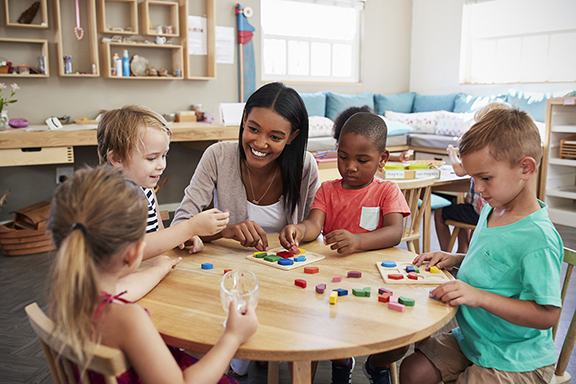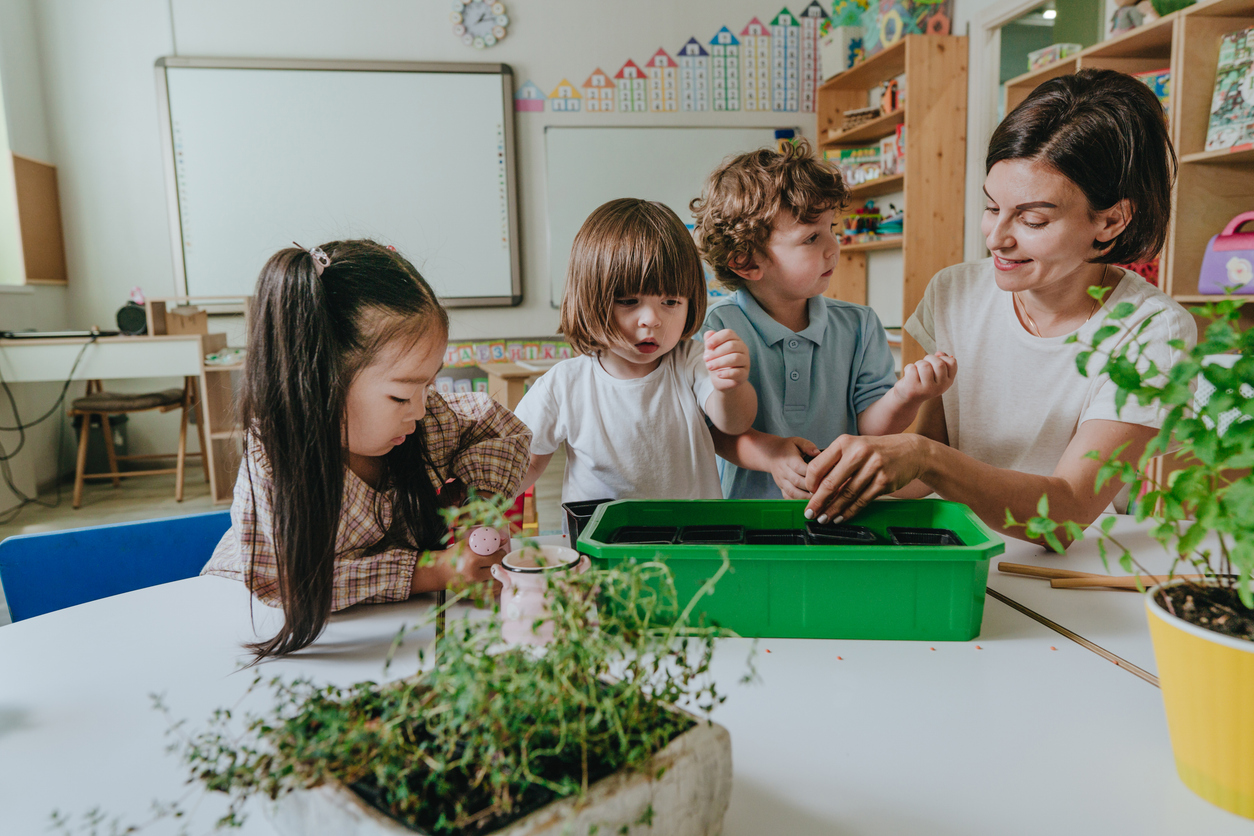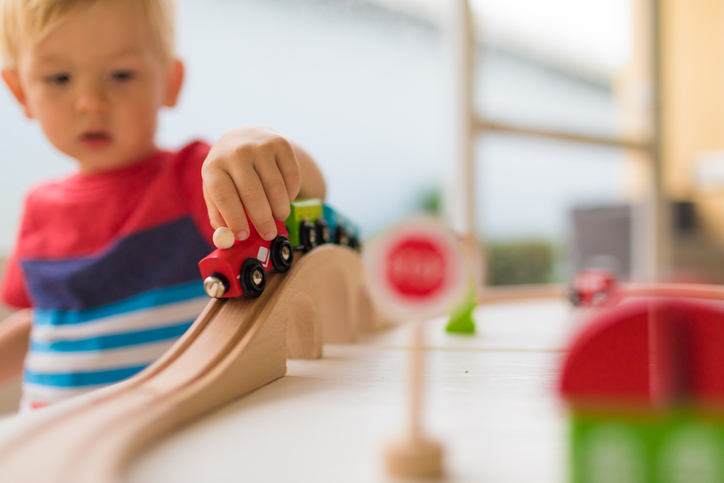8 Types of Preschool in NYC

Ann Levine, Parents League School Advisor
Children begin learning when they draw their first breath of air. Little by little, they develop into curious thinkers who observe, absorb, and understand more and more of the world around them. Not only is this a very gradual process, it is also presented in a variety of ways so young ones can enthusiastically engage with and respond to the sights and sounds around them.
Helping children make meaning is a critical goal in early childhood education, especially once children reach preschool age. This is when they are guided in various ways toward exceptional thoughts, ideas, and concepts they have not previously encountered. And this is where educational pedagogies emerge to help children make meaning of their home and school environments one exciting day at a time. Learning accumulates and accelerates in busy young minds leading to skills, strengths, and interests that children are happy to test and pursue.
At this point, grown-ups in the lives of young toddlers are considering, “How do we find a just-right school for our little one?” Children at two years of age are primed to learn, but it is not yet entirely clear the best preschool program to suit their needs, temperaments, and dispositions.
That is why New York City schools offer such a wide range of choices for these very young learners. With your support at home, they are just preparing themselves for the wonderful classroom experiences and opportunities to come. Many educational practices and principles are proven so here is a brief description of the pedagogies (or “pathways to learning”) parents encounter when getting ready to enroll in a preschool program.
Start by becoming familiar with some of these terms and descriptions so you can identify preschools offering an approach you seek – as well as other desirable details and assets such as equity, inclusion, diversity, respect, and kindness. Below is a list of the 8 most common types of NYC preschool programs in no particular order:
1. Montessori
This educational system, developed in the early 20th century by Italian educator Dr. Maria Montessori, is rooted in an individualist approach to education. It is based on the belief that every child has creative potential and a natural motivation to learn. Students engage with classroom learning materials and begin demonstrating independent, enthusiastic aptitudes. Children develop cognitive, social, physical, and emotional skills throughout the Montessori years.
2. Reggio Emilia
Within Reggio Emilia culture, children are considered curious and active learners, especially when stimulated and encouraged by their school surroundings. Founded in an Italian village in the mid-1950s, Reggio Emilia learning encourages students to make discoveries throughout each day. Teachers expose students to different experiences, especially those allowing self-expression and creativity. While observing and tracking student growth and development, teachers ask children to reflect on their own learning.
3. Waldorf Steiner
This learning method developed in late 19th when scholar Rudolph Steiner took a holistic approach to education, expecting children to interact with others so they appreciate the need for connection. Students are taught traditional subjects in non-traditional ways, focusing on feelings, imagination, and critical thinking. The approach focuses on hands-on learning and sensory-based experiences at all developmental stages – from early childhood through the upper grades.
4. Child-Centered, Inquiry-Based, Play-Based
These terms often blend cohesively to encourage children to connect to people, materials, and content so they engage in classroom work and become active participants in learning. Supported by teachers who design curriculum based on children’s growing interests and inquiries, there is a sense of collaboration when working and playing alongside each other. Relationships take hold in the learning community so children feel a sense of belonging and well-being. The use of questions promotes thinking, imagination, and creativity.
5. Constructivist
This type of project-based learning is a progressive teaching style focused on children as active learners. Learning through experience, reflection, play, and exploration, this educational ideal is based on research by developmental psychologist Jean Piaget, who believed children come to school ready to engage. Classroom teachers create activities to facilitate learning and enhance progress. Children make discoveries by directly interacting with others. Real-life contexts and events help students learn problem-solving skills.
6. Integrated
Teachers create interactive environments to inspire kids to see how different learning domains and disciplines overlap. Art, science, music, math, storytelling, writing, and reading mix and merge. Content is approached in creative ways to bring many aspects of learning together. Students are exposed to ideas that come to life a variety of ways as they work through and explore ideas in large and small groups. They carry out investigations and explorations a variety of ways to see what emerges.
7. Traditional (explicit, direct instruction)
Learning takes place within a series of sequenced steps and actions, making sure to check for and revisit understanding. Structured systems teach skills communicated by teachers and explored by students. Emphasis is on communication and participation. Skill acquisition follows a lesson-by-lesson approach, then students work on expressing what they know and how they learned. This teacher-directed approach usually works with a year-long curriculum that is planned out to cover a year of learning.
8. Emergent
Emergent programs take a purposeful approach to keep learning meaningful to children. Their ideas are often designed into the curriculum to accommodate shifts and changes, depending on classroom interests. In-depth projects are possible as students often collaborate to learn from and have fun with others. Students learn at a comfortable pace, investing what they make with time and effort while remembering and talking about projects that provide a sense of mastery.
Recognizing the art of learning and the art of teaching through these definitions is a helpful step in making school-related decisions, and once you have made a choice, contact Parents League for additional advice and support. Sign up for a PLNY Preschool Admissions Workshop and make your first 1-1 preschool advisory appointment when you become a member!











